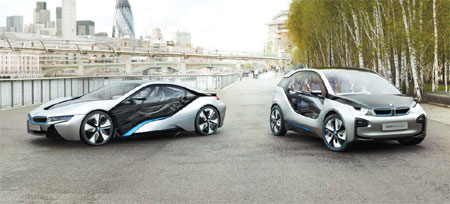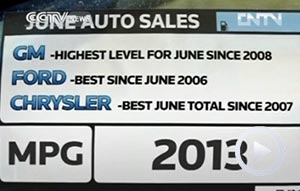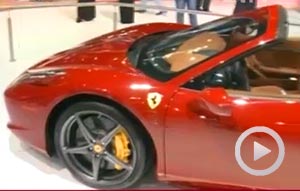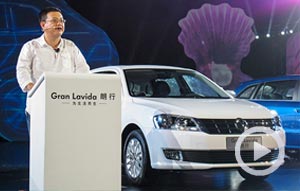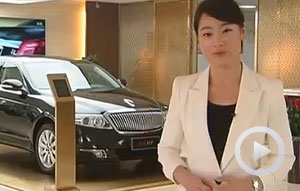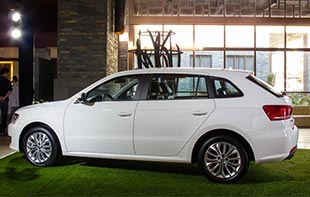Positively electric
Updated: 2013-04-20 07:44
|
BMW i3 and BMW i8 concept vehicles [Photos Provided to China Daily] |
After two years of development, BMW is releasing the new i3 and i8 in a bid to corner the nation's emerging market for greener vehicles
It may seem hard to imagine that not long ago, the BMW i3 and i8 were just prototypes, a gleam in the eye of an engineer at the German car company.
But after two years of road trials and development, the electric cars are being readied for mass production.
In 2011, concept cars for two groundbreaking flagship models of the automaker's i sub-brand of electric cars were debuted in Frankfurt auto show.
At this year's Frankfurt auto show, the i3 could be set to formally hit the market, and it will be followed by the i8 in another few months.
The new models have two features that separate BMW from competitors. One is LifeDrive concept, an all-new architecture that Drive moduel is designed for electric powertrains, and the Life moduel is large-scale use of carbon fiber in the car frame.
The batteries in electric cars usually weigh hundreds of kilograms, forcing manufacturers to cut weight elsewhere to offset the additional burden. Super-lightweight carbon fiber is used to address this problem, but it is not easy to apply the material in cars that are being mass-produced.
BMW currently produces carbon fiber for its cars in a global production chain that stretches across the continents of Asia, North America and Europe.
Colorless precursor filament, the raw material used to produce carbon fiber, comes from Japan. It is transported to the US city of Seattle, where it is processed into black threads that are strong, yet thin.
The threads are shipped to Wackersdorf in southern Germany, where they are woven into mats.
Next, the mats are made into hardened car parts at BMW's plant in Landshut before they travel to the carmaker's Leipzig plant to be assembled.
For the past decade, BMW has been looking for ways to improve the process and lower costs in order to make carbon fiber a truly commercialized material fit for large-volume production in the auto industry.
In Landshut, for example, engineers and workers have made big progress in the past decade on the production line. In spring last year, the plant increased its output of carbon fiber roofs for the BMW M3 to 70 a day, whereas it had produced 50 each day previously. In 2003, the factory was only capable of building 1,200 roofs in an entire year.
According to the company, it once required two hours for the carbon fiber parts to take shape, but now the process is completed within 10 minutes. The company also invented ways to recycle the carbon fiber wastes and bring them back to the production chain.
The prices of the i sub-brand vehicles won't be unaffordable, according to the company, which stated that the target is to expand the client base instead of targeting a small group of customers.
Futuristic design
As electric cars under a premium brand, the i3 and especially the i8 feature a fresh and futuristic "design language", said Jacob Benoit, the design chief of the i sub-brand.
"By the design language, we want to describe emotionally and visually the advantages of the car. For instance, it is light, efficient and functional," Beniot said.
Electric cars often take on a shape that does not look agile or dynamic, so it is important that the car's appearance conveys its light weight, he said.
"In the design of the i8, we try to combine aerodynamics and aesthetics," he said.
"At most times the ration of aerodynamics is more about function, but we try to make aerodynamics look sexy and emotional."
BMW designers also built a futurist front end and shape for the cars to highlight the innovative technologies used.
Benoit said the special shape and exterior of the i models are also partly the result of their special materials - the framework of the cars are made of carbon fiber, and the coverings are of other materials.
"We design the cars in totally different ways, and the manufacturing process will be very different. That's why the i models looks so different from other cars on the market," he said.
Auto Business Review contributed to the story.


